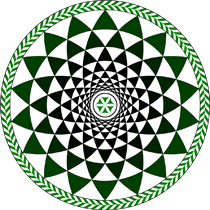Speaker
Ms
Koyomi Nakazawa
(Department of Chemistry, University of Tsukuba)
Description
The phase transition from the ordered gel phase (L&beta') to the disordered liquid-crystalline (L&alpha) phase of a phospholipid bilayer is important for the biomembrane functions. Although incorporated additives such as cholesterol are known to affect the transition behavior, detailed mechanisms have not been clarified. In the present study, the effect of cis/trans isomerization is investigated using stilbene [1] to understand the effect of the steric structure of additives.
Differential scanning calorimetry revealed that the L&beta' - L&alpha phase transition temperature of DPPC decreases by larger extent with cis-stilbene than trans-stilbene. In both L&beta' and L&alpha phases, the bilayer thicknesses and the in-plane molecular packing do not change by the addition of cis- or trans-stilbene from that in pure system. On the other hand, Fourier transform infrared spectroscopy indicates that the perturbation of alkyl chains of the lipids by cis-stilbene is larger than that by trans-stilbene at lower temperature. This suggests that the effect of additives on the order of alkyl chains dominates the change in the L&beta' - L&alpha phase transition.
The effect of the transition on the photoisomerization of stilbene was also examined using the ultraviolet-visible spectroscopy. Exposure of 313 nm of UV light in the L&beta' phase scarcely leads to the photoisomerization of trans-stilbene, while that in the L&alpha phase photogenerates 25-50 % of cis-stilbenes. That is, photoisomerization of trans-stilbene depends on the phase of the lipid bilayer.
These findings demonstrate the cross-relationship between a phase transition of a lipid bilayer and a photoisomerization of an incorporated molecule. In the presentation, we will also discuss the effect of stilbenes on the transition between the L&alpha and the HII phases.
References
[1] K. Nakazawa, M. Hishida, S. Nagatomo, Y. Yamamura and K. Saito, Chem. Lett. 43, 1352 (2014).
Differential scanning calorimetry revealed that the L&beta' - L&alpha phase transition temperature of DPPC decreases by larger extent with cis-stilbene than trans-stilbene. In both L&beta' and L&alpha phases, the bilayer thicknesses and the in-plane molecular packing do not change by the addition of cis- or trans-stilbene from that in pure system. On the other hand, Fourier transform infrared spectroscopy indicates that the perturbation of alkyl chains of the lipids by cis-stilbene is larger than that by trans-stilbene at lower temperature. This suggests that the effect of additives on the order of alkyl chains dominates the change in the L&beta' - L&alpha phase transition.
The effect of the transition on the photoisomerization of stilbene was also examined using the ultraviolet-visible spectroscopy. Exposure of 313 nm of UV light in the L&beta' phase scarcely leads to the photoisomerization of trans-stilbene, while that in the L&alpha phase photogenerates 25-50 % of cis-stilbenes. That is, photoisomerization of trans-stilbene depends on the phase of the lipid bilayer.
These findings demonstrate the cross-relationship between a phase transition of a lipid bilayer and a photoisomerization of an incorporated molecule. In the presentation, we will also discuss the effect of stilbenes on the transition between the L&alpha and the HII phases.
References
[1] K. Nakazawa, M. Hishida, S. Nagatomo, Y. Yamamura and K. Saito, Chem. Lett. 43, 1352 (2014).
Author
Ms
Koyomi Nakazawa
(Department of Chemistry, University of Tsukuba)
Co-authors
Prof.
Kazuya SAITO
(Department of Chemistry, University of Tsukuba)
Dr
Mafumi Hishida
(Department of Chemistry, University of Tsukuba)
Dr
Shigenori Nagatomo
(Department of Chemistry, University of Tsukuba)
Dr
Yasuhisa Yamamura
(Department of Chemistry, University of Tsukuba)

